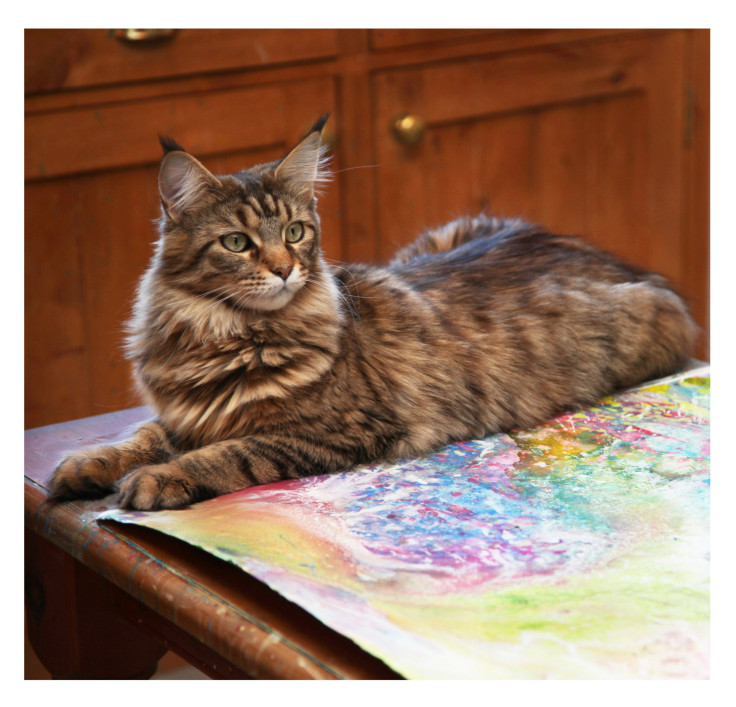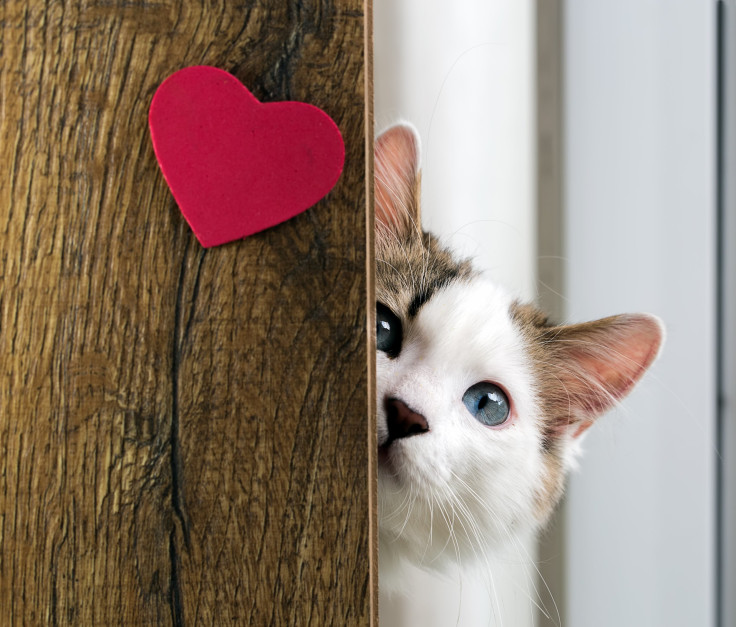Children With Autism Can Become More Social With A Cat By Their Side

As much as the internet collectively enjoys the furry spectacle of cats, especially kittens, there's also a very real trend of wariness surrounding the feline.
Cats are often painted as unloving, murderous, disease-carrying moochers who manipulate us into a decidedly one-sided relationship — a description that especially becomes popular when they're compared to dogs (and which I fully confess to having engaged in from time to time).
But my dog favoritism aside, the truth is that cats, for all their supposed frigidness, have long been a trusted ally and supportive comrade to humankind. One sterling example of this is in the benefits cats confer to those with socially crippling autism spectrum disorder (ASD).
Coaxing Them Out Of The Shell
In 2012, French researchers published a study in PLOS One in which they took a look at whether pets could help people with autism, characterized previously by Medical Daily as an inability to connect to other people and engaging in repetitive, often unusual behaviors. The "spectrum" in ASD denotes the varying degrees of severity with which these symptoms can present themselves.
Interviewing the parents in 260 families with an autistic individual, they found that a certain subset of pet-owning households was associated with an improvement of prosocial behaviors — homes that had welcomed a pet after the autistic child had turned 5, which the researchers noted is a "key age" in any evaluation of the behavioral disorder.
"The arrival of a pet in a family has been shown to increase the level of interactions between family members: they spend more time together and share joint attention on the new family member,” the authors wrote. "The new arrival of a pet potentially elicits more attention in individuals with autism, thus leading to a greater chance of bonding with the pet."
Specifically, they found that children with autism who had a pet after the age of 5 were more likely to be better at offering to share and offering comfort to others when compared to similarly impaired children. This trend became more significant as the reported bond became stronger between child and pet — whether it was playing or taking care of it. These pets included cats, but also dogs and a hamster.
"Playing with a pet is a complex behavior, sometimes involving object manipulation as a means for practice and mastery of action schemas (i.e. sensorimotor play) or a child’s ability for mental representation," they explained. "Thus, it provides a child with means of practicing and understanding the events of his or her social world."
Though children with autism are often overwhelmed by new stimuli, the authors theorized that the pet’s arrival was seen as a subtle enough shift in the environment that it didn’t frighten them, and the relatively fewer demands that come with a pet-human relationship allowed these children to better acclimate to social interactions — the pet may have also tightened the family dynamic.
Another PLOS One study in 2013 lent support to that theory by studying the peer interactions of 99 children — a third of whom had ASD — as they either spent time with two guinea pigs or a series of toys in the same room.
"Participants with ASD demonstrated more social approach behaviors (including talking, looking at faces, and making tactile contact) and received more social approaches from their peers in the presence of animals compared to toys," the authors concluded. "They also displayed more prosocial behaviors and positive effect (i.e. smiling and laughing) as well as less self-focused behaviors and negative effect."
More recently, this April, several of the authors published a follow-up study in the journal Development Psychobiology in which they measured children's physiological arousal in different classroom settings, finding that they were more stressed out than their non-autistic peers, except when they got to play with the guinea pigs. The pets acted as a sort-of "social buffer" for the children — a furry nonthreatening bridge to improve communication with those around them.
But it’s not just in the controlled environments of a study or two that we can find evidence for the benefits of a pet, specifically cats. in dealing with autism, There are plenty of heartwarming personal stories out there too.

'Cats Are Like Me'
For father and neuroscientist J. Manerling, it had been a tumultuous time in his family: his wife had recently died and he was left alone with a 9-year-old daughter and a 4-year-old son with autism whose name was Richard, and who was largely unable to communicate verbally. The family's situation took a turn for the better, however, once they met a new friend — eventually named Clover — at the local animal shelter.
"As we walked past the cages, there in a corner was a black and white tuxedo cat. Suddenly my four-year old non-verbal son pointed to the cage and said, 'Cat!' That was it," Manerling said in a 2011 article on Cats.About.com. "From day one, we heard Richard having conversations with Clover when no one was looking. He had language. He needed someone with the patience to listen and who did not ask him to repeat himself or explain what he meant. Clover had all those qualities."
Though Clover would pass away by the time Richard entered college, other cats, Linus and Melody, would step in to quietly soothe him as he completed his algebra assignments or worked on his art projects. “Cats are like me," Manerling recalled Richard telling him once. "They look at everything and think about it when everyone thinks they're not paying attention and they only talk when they have something to say."
More recently, there’s the beautiful tale of 5-year-old Iris and her art assistant Thula the cat.
Iris Grace Halmshaw, of the UK, had been diagnosed with ASD in 2011. But while she is also mostly non-verbal, from the age of 3 onward, Iris began to communicate in her own special way through expressive, impressionist-like paintings.
In February of 2014, she took on an apprentice, a Maine Coon breed by the name of Thula, and the two have been inseparable ever since. "She will ride in a basket on our bikes, go for rides in the car, and bathe with Iris," Iris’s mother, Arabella Carter Johnson, told Medical Daily in an email, "She helps Iris through the many challenges she faces on a daily basis."
In return, Iris has begun to incorporate Thula into her artwork as Thula sits patiently nearby, never too clingy or rambunctious. Through her art and Thula, Iris is steadily learning how to reach out to the outside world better than ever before. "Thula has certainly allowed us to see cats in a different light and I now feel that many cats would be perfect companions for a child on the spectrum," Carter-Johnson said. "They can be incredibly loyal, loving, and courageous."
A Place In The Heart
Much like how no two cats are perfectly alike, no two people on the spectrum are either. The idea of a pet, whenever it’s introduced to the home, may not be recommended for everyone with ASD.
For some, it will be a therapy dog that brings them out of their shell; for others, a cat or guinea pig — Carter-Johnson notes that Maine Coons like Thula are known for being particularly people-friendly. But pets, even when they fit perfectly for someone on the spectrum, shouldn’t be seen as a wonder treatment; they’re a companion that can help someone with ASD cope through the added stresses of the disorder. And there still needs to be more research conducted to determine the best ways to utilize the beneficial effects of pet ownership when it’s appropriate.
But, though we’ve mostly touched upon ASD, the simple truth is that pets, including and especially cats, are known to ease the burdens of most everyone who owns them.
So sure cats can be temperamental. Or fussy. Or bossy. But they can also be our best friends. (They’re basically the college roommates of the animal world). And for some lucky people, they can be lifesaving.
"Obviously not all cats are like this and maybe Thula’s incredibly special — she certainly is to us — but I don’t believe she will be the only one," Carter-Johnson said, "There will be others that if given the opportunity can help their buddies in similar ways and surprise us all."
(More of Iris’ paintings, which are partly intended to raise awareness about ASD, and Thula can be seen on her website. Carter-Johnson is currently working on a book about Iris and Thula due to be released in 2016.)



























